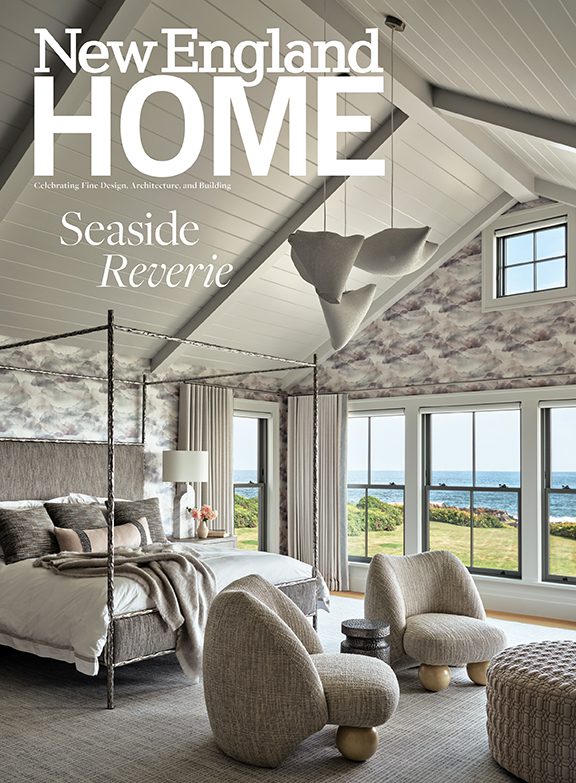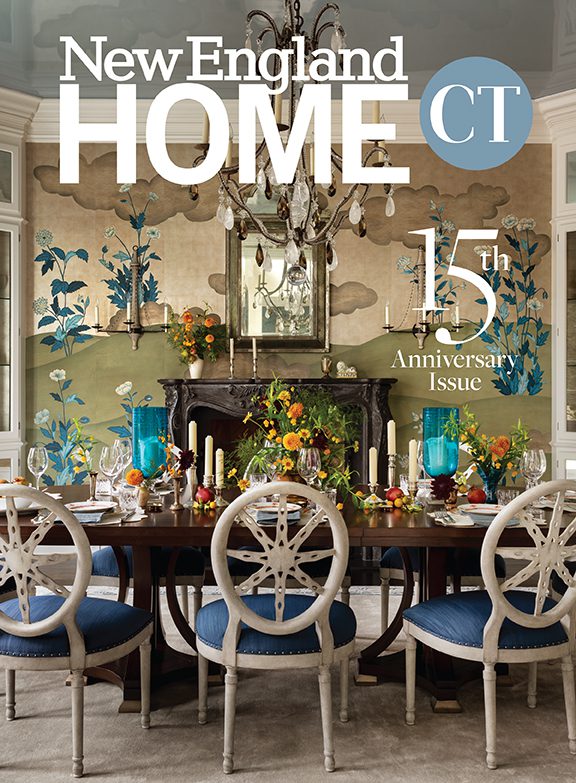John Derian
June 28, 2011
Text by Cheryl Katz Photography by John Heil
John Derian spent much of his youth collecting and assembling found objects, creating outdoor “rooms” composed of twigs, branches and stones. By the time he was in seventh grade, his watercolor paintings were winning awards. A Boston native and New York transplant, Derian now oversees three shops, a line of furniture and a decoupage collection that is carried in stores throughout the United States—including a shop in Provincetown, Massachusetts—Canada and Europe. I caught up with him recently at his shop in New York City’s East Village.
Cheryl Katz: I was introduced to your work for the first time in the late ’80s. At the time, there was a wonderful shop called La Ruche on Newbury Street in Boston, owned by Sister Parish’s daughter, Apple Bartlett, and Maria Church. It was there that I purchased a small paper frame, covered in buttons, handmade by you.
John Derian: I had been working at a floral shop at the Ritz, making crazy things—swags with starfish, topiaries covered in crystals, boxes covered in maps, things like that—when Apple and Maria came in and asked me to make something for their shop. I had made some crazy wreaths for them sometime earlier. I loved buttons and had been collecting them, so I decided to make them button trees. And that led me to make button frames.
CK: (Laughing) Oh, I get that—button trees, why not button frames?
JD: I had started working at La Ruche one day a week when I noticed that they needed picture frames, so I made my version. I’d always embellished things, so why not frames? I cut them out of cardboard, gessoed and painted them and then decorated them with the buttons along with other stuff I found at flea markets—vintage flowers, shells, trims. In fact I still have about twenty-five boxes of that stuff in my basement. I hung the frames from ribbons or made easel backs for them and used old papers, French textbooks, hand-written letters in place of the picture.
CK: I guess it’s safe to say you love creating things. Did you always?
JD: I always made things. When I was really young, I would make spaces from things I found, like rocks and twigs, and by moving furniture around. I was a collector even then. I liked drawing, crafts, things I could do with my hands.
CK: Were your brothers and sisters equally artistic?
JD: No. I was the youngest of six children, the black sheep in that respect, an alien,
but it worked out.
CK: How did you move from making one-of-a-kind embellished pieces, like topiaries and frames, to your decoupage pieces?
JD: While I was at La Ruche, I met Emily Henry, who did painted furniture for the store. One day she brought me a stack of glass plates and suggested that I glue images to the back of them. I had been collecting old paper, old books, letters, ephemera. I wasn’t really sure what to do or what she meant, but I went back to my studio and tried it. And then they started selling at the store. I just recently saw one of the early ones. It was . . . awful.
CK: I doubt that. At the risk of sounding like a John Derian groupie, I have an early one. It’s great, a collage encased in glass. But at that point, these were still handmade by you, one of a kind. What was the turning point?
JD: I had the opportunity to move to New York for a summer, and I worked at an advertising agency where I had to copy things. I’d been having trouble with my plates; the glue wasn’t sticking very well to the old papers. But the paper I was using to reproduce things responded well to the glue. This meant that I didn’t have to tear apart old books or letters. For the first time, I could design things that I could repeat, rather than just one-of-a-kind things.
CK: Is that when you started to focus on your decoupage pieces?
JD: Yeah, I moved to New York in 1992 and I got an order for $30,000 worth of plates.
CK: Yikes.
JD: I got all my friends together at my studio and we started to fill the orders. When my studio got too cramped, a space at 6 East 2nd Street, near my studio, became available.
CK: You were producing your decoupage collection there, but, as I recall, you had a little retail shop in the front?
JD: I hung a curtain to create a separate space for the shop, about 500 square feet, and started selling my plates and a few pieces of furniture I found. And then other things that interested me.
CK: How did you decide, other than your own pieces, what you would sell?
JD: I gravitate toward the handmade, the whimsical, the antique, things that have texture, things that have been touched.
CK: You’re not making things in the back of the shop anymore.
JD: No, we have a studio around the corner. Now this shop carries my decoupage collection and imported things, like handmade glazed terracotta pottery from the French company Astier de Villatte, Geraldine Gonzalez candleholders from Paris and hand-stitched and hand-dyed poufs from Morocco. In 1994, I opened a second shop next door for textiles, furniture, rugs and art.
CK: And, as if this weren’t enough, there’s your line of furniture, a collaboration with Target, and now the shop in Provincetown, a mini version of your two New York stores.
JD: Yeah, this is the fourth season for the Provincetown shop. We open seasonally, from late May through September.
CK: Which means you get to spend some time there.
JD: Nature is my number-one inspiration, so when I’m in Provincetown, I get to spend time at the beach, ride my bike on nature trails, spend time in my yard and in the garden.
CK: Other inspirations besides nature? Places, people, things?
JD: I have a godchild and friends in Brussels, and I go there a lot and to Paris and to Morocco—I had a place there for about six years—for inspiration. I’m sure I have other inspirations, but I feel like my head’s been down for so long that I just work and work and make and make.
CK: So what’s next?
JD: I’m working on a line of melamine plates. I was inspired by the material when I collaborated with Target. I’ll wholesale them and sell them at my shops.
CK: No rest for the weary…or the creative.
JD: It’s my life.
Editor’s Note: John Derian’s Provincetown shop is on Law Street, (508) 487-1362, www.johnderian.com
Share
![NEH-Logo_Black[1] NEH-Logo_Black[1]](https://b2915716.smushcdn.com/2915716/wp-content/uploads/2022/08/NEH-Logo_Black1-300x162.jpg?lossy=1&strip=1&webp=1)






